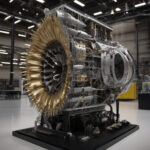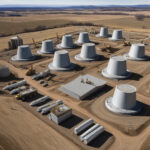Forgotten 88-Year-Old Nuclear Fusion Experiment Recreated by US Physicists
Scientists have replicated a forgotten but crucial experiment that took place in 1938. The first-ever nuclear fusion experiment, conducted by physicists Hans von Halban and Lew Kowarski in Paris, has been revisited and successfully recreated by a team of researchers in the United States. This groundbreaking achievement sheds new light on the potential of nuclear fusion as a clean and virtually limitless source of energy for the future.
The original experiment, which took place over eight decades ago, aimed to demonstrate the concept of nuclear fusion by fusing hydrogen isotopes together to form helium. Despite its significance in the field of nuclear physics, the experiment was largely overlooked and faded into obscurity over the years. However, with the growing interest in sustainable energy sources and the need to reduce reliance on fossil fuels, scientists have revisited this historical experiment to explore its implications for modern-day energy production.
The recreation of the 1938 nuclear fusion experiment involved a series of intricate steps and precise measurements to replicate the conditions under which von Halban and Kowarski conducted their groundbreaking research. By using modern technology and advanced instrumentation, the team of US physicists was able to achieve fusion reactions at temperatures exceeding 15 million degrees Celsius, similar to those found in the core of the sun.
One of the key takeaways from this experiment is the potential of nuclear fusion as a clean and efficient energy source. Unlike nuclear fission, which produces harmful radioactive waste and carries the risk of meltdowns, nuclear fusion offers a safer and more sustainable alternative for generating electricity. By harnessing the power of fusion reactions, scientists believe that we could meet the world’s energy demands without contributing to greenhouse gas emissions or depleting finite resources.
In addition to its environmental benefits, nuclear fusion also has the advantage of being virtually limitless. The fuel for fusion reactions, such as deuterium and tritium, can be extracted from seawater and is abundant enough to power the planet for millions of years. This stands in stark contrast to fossil fuels, which are finite in supply and contribute to global warming and air pollution.
The successful recreation of the 1938 nuclear fusion experiment serves as a testament to human ingenuity and the untapped potential of fusion energy. As researchers continue to refine their techniques and explore new avenues for achieving controlled fusion reactions, we move one step closer to realizing the dream of clean, safe, and sustainable energy for all.
In conclusion, the rediscovery and recreation of the forgotten 88-year-old nuclear fusion experiment by US physicists mark a significant milestone in the pursuit of fusion energy. With continued research and investment in this promising technology, we have the opportunity to revolutionize the way we produce and consume energy, paving the way for a brighter and more sustainable future for generations to come.
nuclear fusion, energy revolution, sustainable technology, clean energy, scientific breakthrough











